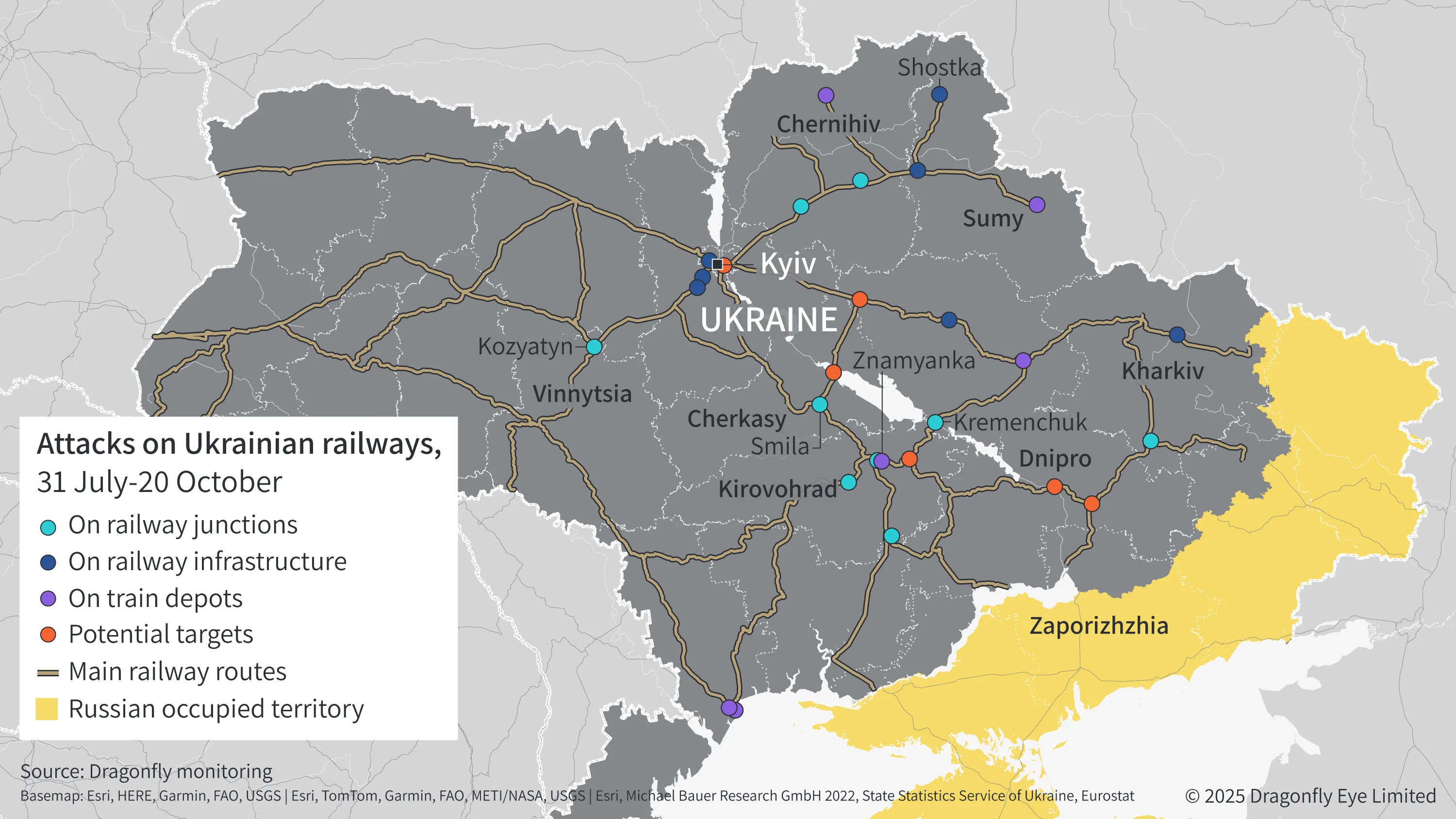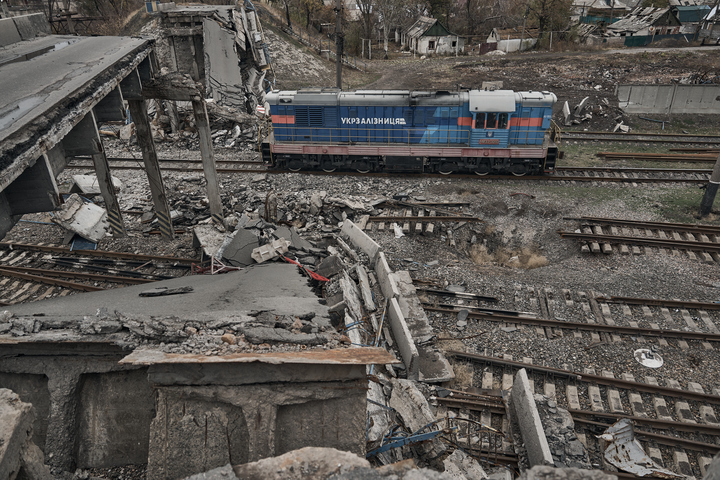- Railways in Ukraine are likely to become less safe and more prone to disruption in the coming weeks, as Russia intensifies its strikes on vital infrastructure
- In recent months, Moscow has expanded its campaign of mass aerial strikes on critical infrastructure in Ukraine, especially railways
- The aim is probably to disrupt supplies to eastern regions headed for the Ukrainian army and to erode public morale
We expect rail travel in Ukraine to become less safe and more frequently disrupted in the coming weeks, as Russia is likely to continue its attacks on critical infrastructure. We have recorded 20 attacks in the past three months on train depots, rail junctions, rail lines and energy substations. Moscow seems to be trying to disrupt military logistics to frontline regions in eastern Ukraine and to break the Ukrainian public’s morale through indiscriminate aerial barrages.
Over the coming winter, Russia’s attacks are likely to continue on an almost weekly basis, causing power outages that often disrupt rail services, since many cross-country trains in Ukraine run on electricity. A widespread power outage, notably affecting large parts of Kyiv and the Kyiv metro, followed a mass aerial attack on 10 October. A day earlier, Russian air strikes on rail infrastructure in Sumy and Chernihiv regions in northern Ukraine led to the suspension of rail services there.

Russia aims to break civilian morale and disrupt military supplies
Russia appears likely to increasingly focus its strikes on railway infrastructure, especially in cities and regions close to the front. We have recorded 20 attacks on Ukraine’s railway network, including energy substations, since late July (see map). These have killed at least three people and injured more than 40 others, according to local media. The latest attack, overnight 19-20 October, was on a rail power supply unit under repair in the Chernihiv region, according to the usually reliable Ukrayinska Pravda.
Russia’s main goal appears to be to disrupt Ukrainian army supply lines – chiefly in Sumy, Kharkiv and Donetsk – in the north-east and east. But there have also been strikes on routes from west-central regions connecting to them (see map). For example, a mass Russian aerial strike on 2 September at the Znamyanka junction in Kirovohrad disrupted up to 22 east-west cross-country services for several hours. Rail remains a vital means of transport and logistics for the Ukrainian military. By contrast, attacks in recent months on railways further west — at entry points from Poland in Volyn or Lviv regions, for example — have been much more sporadic.
A secondary motive appears to be to spread fear among the Ukrainian population through indiscriminate air attacks. Russia is very probably trying to pressure the Ukrainian authorities to accept its ceasefire terms, which includes the surrender of parts of Donetsk it does not yet control. On 4 October, Russia struck a passenger train in Shostka, Sumy region, with drones, seemingly waiting for emergency services to arrive before directing a second attack.
Kyiv and regions east of the Dnipro River are most exposed
Based on recent attack patterns, railway infrastructure in the Kharkiv, Dnipropetrovsk and Zaporizhzhia regions is most likely to be targeted in the coming weeks. These regions depend on tracks that cross four railway bridges over the Dnipro River. Signalling this, on 7 September Russia struck the bridge in Kremenchuk, Poltava region, causing lengthy train detours and delays.
In recent months, Russia has also repeatedly attacked key junctions at Znamyanka and Kropyvnytskyi (both in Kirovohrad region), Kozyatyn (Vinnytsia) and Smila (Cherkasy), paralysing rail traffic for hours at a time. Such disruption is likely to last longer in the coming months as Russia’s strikes on the network intensify as part of its wider efforts to push Kyiv to agree to its demands.
Rail travel is likely to become less safe and reliable
Travelling by rail is therefore likely to become less safe and reliable in the weeks ahead. We suspect that Russia will launch more attacks on locomotives in the coming weeks, as they are harder to replace or repair than carriages or tracks. This is supported by reports of at least four attacks on train depots in the past month. Relatedly, Moscow seems to be using technological improvements of weapons to do so; on 1 October, Ukraine’s security service reported that Russia’s new AI-powered drones can identify, follow and attack specific moving targets, such as trains.
POKROVSK, UKRAINE – NOVEMBER 16: A locomotive passes under a destroyed bridge on a heavily damaged railway track in the city, approximately 10 km from the frontline, on November 16, 2024 in Pokrovsk, Ukraine. (Photo by Kostiantyn Liberov/Libkos/Getty Images)




